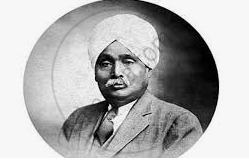Advertisements
Advertisements
Question
The conflict between two sections of the Congress came to surface in its Session in 1906 at Calcutta. In this context, explain the following:
State any four methods that they advocated for the achievement of their aims.
Solution
Four methods that were advocated by the Assertive Nationalists for the achievement of their aims were:
(i) Swadeshi: Swadeshi means the use of goods which are produced by indigenous industries. It aimed at making the country self-reliant and self-sufficient. The assertive nationalists used Swadeshi as a tool not only to promote the Indian industries but also to hit the British economic interests.
(ii) Boycott: The assertive nationalists stressed on the boycott of foreign goods in an effort to boost local Indian industries. It also aimed at providing employment opportunities to the people.
(iii)National Education: A national scheme of education was planned as an alternative of the government-controlled universities.
(iv)Passive Resistance: The Assertive Nationalists followed the policy of nonviolent resistance and strong political action to achieve independence of the country.
APPEARS IN
RELATED QUESTIONS
Give the names of two leaders who led the Home Rule Movement in India.
Who founded the Home rule League in India? What was its objective?
Mention two important contributions of Lala Lajpat Rai.
In what way was Tilak the forerunner of Gandhiji?
Which national leader Was called Sher-e-Punjab? Why was he called so?
What were the steps took by Bal Gangadhar Tilak in exposing’the causes of British Administration.
Discuss the role of Lala Lajpat Rai as a writer and journalist.
Discuss about the contribution of Bipin Chandra Pal in National Movement.
Answer the following:

(i) Identify the persons in the picture given above.
(ii) To which section of the Congress did he belong and what was his ultimate objectives?
Who among the following was NOT an Assertive Nationalist leader?
